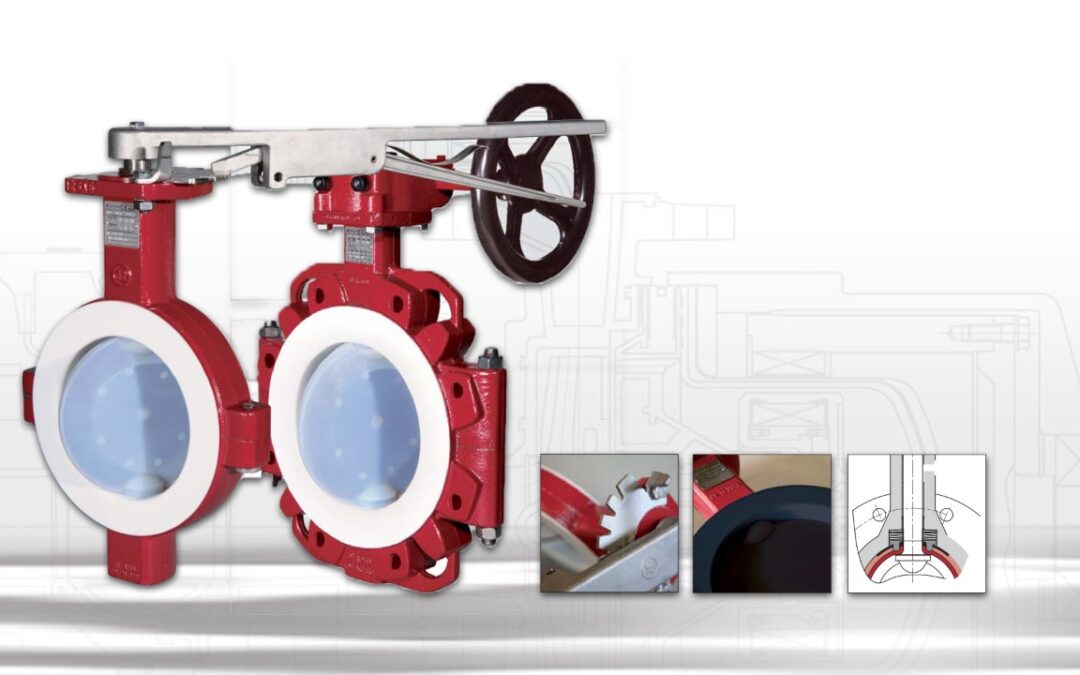Butterfly valves are a popular type of valve used in various industries for regulating flow. They have a simple design consisting of a disc-shaped element that rotates around an axis to control flow. In this blog, we will discuss the main function of butterfly valves, their specifications, uses, advantages, disadvantages, and some of the top manufacturers.
What are functions of butterfly Valves?
The main function of butterfly valves is to regulate the flow of fluids in a pipeline. The disc-shaped element can be rotated to any angle between 0 and 90 degrees, allowing for precise control over the flow rate. Butterfly valves are typically used for on/off applications or for modulating flow. When fully open, butterfly valves have a minimal pressure drop and offer unobstructed flow. When closed, they provide a tight seal, preventing any flow.
What are butterfly valves specifications?
Butterfly valves are available in various sizes, materials, and designs to suit different applications. Some common specifications include:- Size: 2″ to 72″
- Pressure Rating: Class 150 to 1500
- Temperature Rating: -50°C to +650°C
- Body Material: Cast iron, ductile iron, carbon steel, stainless steel, etc.
- Disc Material: Stainless steel, aluminium bronze, duplex steel, etc.
- Seat Material: EPDM, Buna-N, Viton, PTFE, etc.
What are butterfly valves uses?
Butterfly valves are used in various industries, including chemical, oil and gas, water treatment, HVAC, and food and beverage. Some common applications of butterfly valves include:- On/off and modulating control of water, steam, gas, and liquids
- Isolation and regulation of pipelines, tanks, and vessels
- Control of flow rates in HVAC systems
- Control of fluid flow in food and beverage processing
What are the advantages of butterfly valves?
Butterfly valves offer several advantages over other types of valves, including:- Lightweight and compact design
- Easy and quick to operate
- Minimal pressure drop when fully open
- Cost-effective compared to other valve types
- Can handle high flow rates and pressures
- Low maintenance requirements
What are the disadvantages of butterfly valves?
Despite their advantages, butterfly valves also have some limitations, including:- Limited temperature range compared to other valve types
- Not suitable for applications with abrasive or corrosive fluids
- Limited throttling capabilities
- May require additional support to prevent vibration
What do the market & technology trends look like?
The butterfly valve market is witnessing significant growth due to advancements in technology and the increasing demand for reliable and efficient valves. One of the latest trends in the market is the use of advanced materials such as thermoplastics, stainless steel, and exotic alloys, which offer improved durability and resistance to corrosion. Additionally, there is a growing demand for butterfly valves with enhanced functionality, such as those that can be operated remotely or through automation systems.Another trend in the market is the increasing adoption of smart butterfly valves, which are equipped with sensors and advanced monitoring systems. These valves can provide real-time data on their performance, allowing for predictive maintenance and improved reliability. The rise of Industry 4.0 and the Internet of Things (IoT) has also spurred the development of connected butterfly valves that can communicate with other systems and devices.
In terms of the global market, Asia-Pacific is expected to be a major driver of growth due to increasing industrialization and infrastructure development in countries like China and India. The demand for butterfly valves is also expected to rise in the oil and gas, chemical, and water treatment industries, among others.
Overall, the butterfly valve market is constantly evolving, and manufacturers are focusing on innovation and customization to meet the changing needs of their customers.
Conclusion
In conclusion, butterfly valves are widely used for regulating flow in various industries due to their simple design, cost-effectiveness, and ease of operation. While they have some limitations, their advantages make them a popular choice for many applications. When choosing a butterfly valve, it’s important to consider the specifications and requirements of your application to ensure the valve is suitable.
IDEX India is a leading manufacturer and supplier of a wide range of industrial equipment, including butterfly valves. Their commitment to quality and innovation has earned them a reputation as a trusted partner in the industry. With a team of skilled professionals and state-of-the-art manufacturing facilities, IDEX India is capable of producing high-quality butterfly valves that meet the specific needs of their clients. Their dedication to customer satisfaction is reflected in their focus on providing excellent service and support throughout the entire process, from design to installation and maintenance. Whether you’re looking for standard butterfly valves or customized solutions, IDEX India has the expertise and resources to deliver reliable and efficient products that meet the highest standards of quality and performance.
